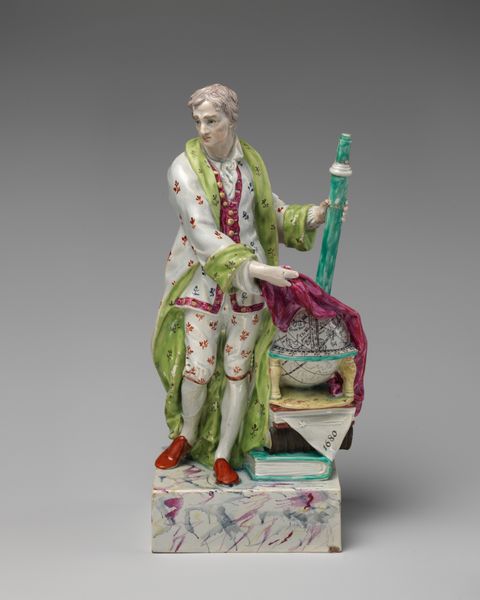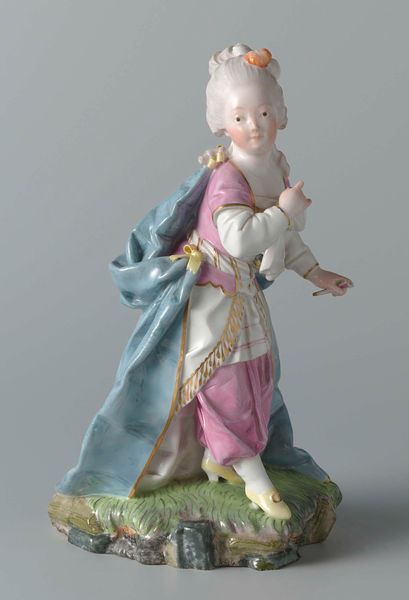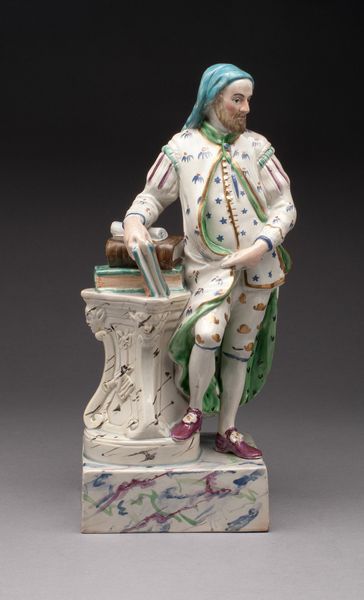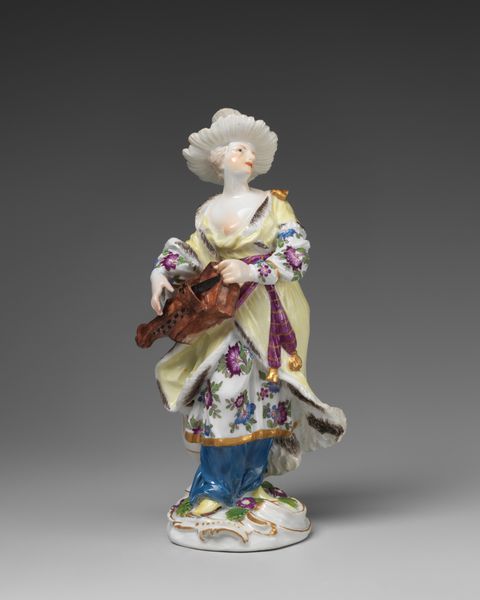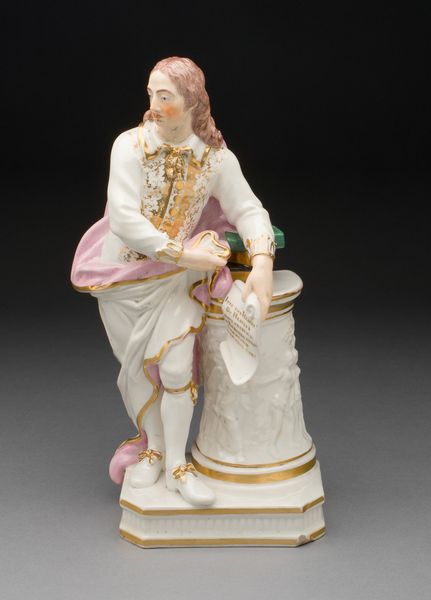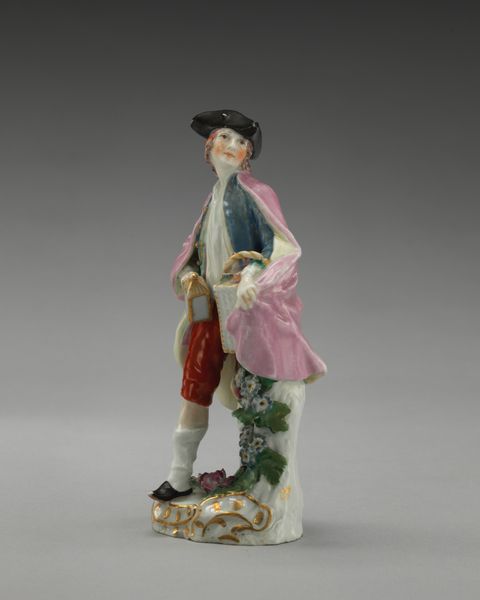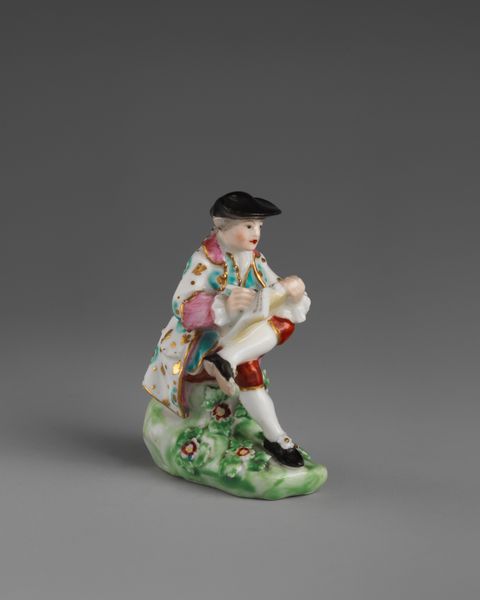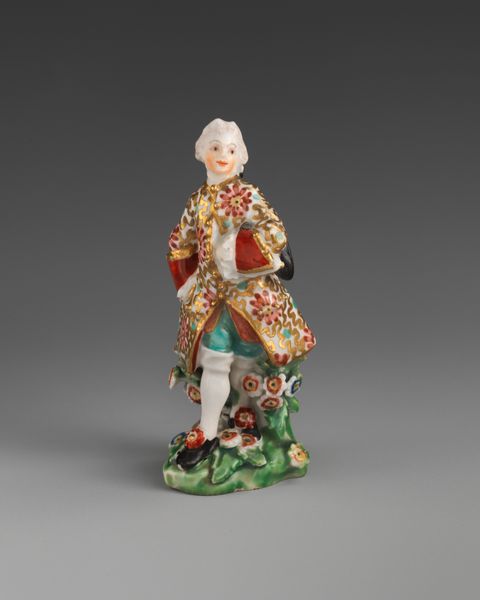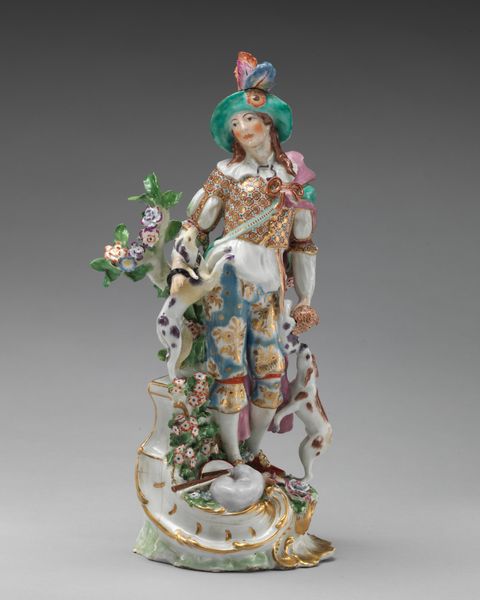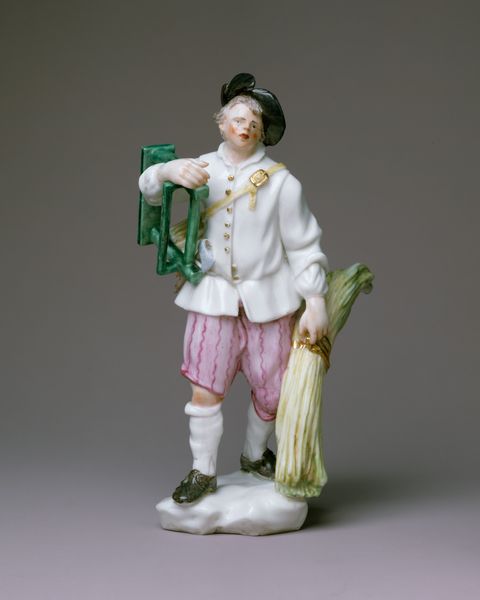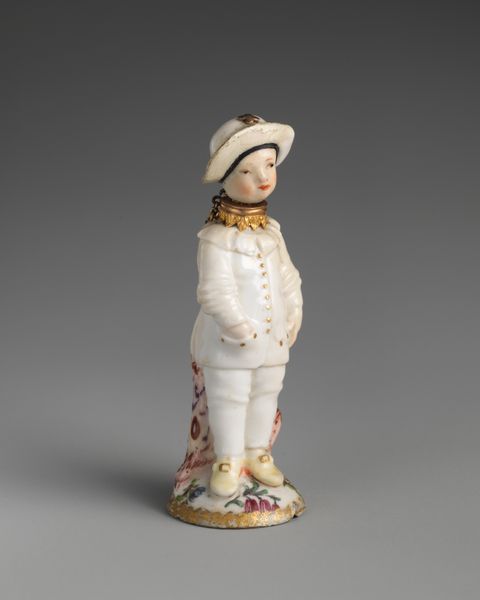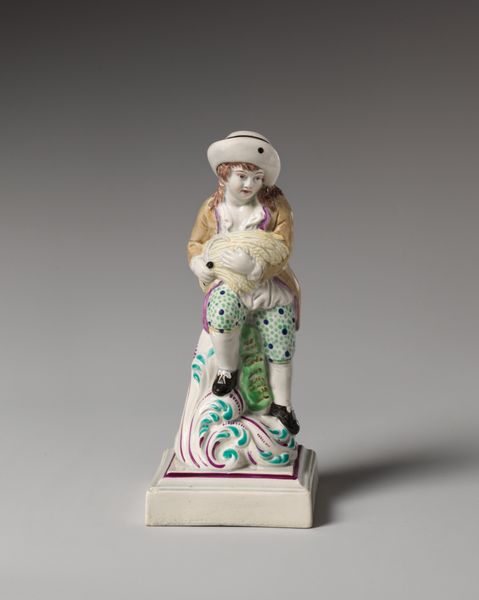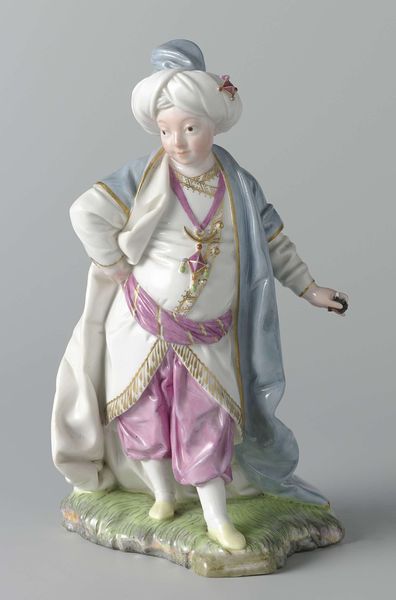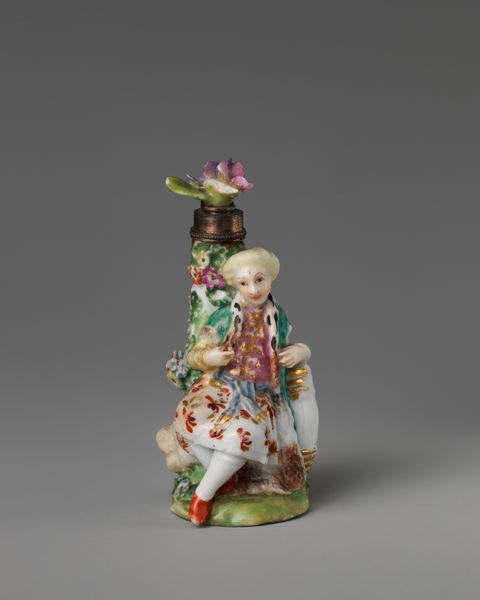
Geoffrey Chaucer (ca. 1340–1400) (one of a pair) 1785 - 1795
0:00
0:00
ceramic, sculpture
#
portrait
#
neoclacissism
#
ceramic
#
classical-realism
#
figuration
#
sculpture
#
history-painting
#
decorative-art
Dimensions: Height: 12 1/8 in. (30.8 cm)
Copyright: Public Domain
Editor: Here we have a ceramic sculpture entitled "Geoffrey Chaucer," crafted around 1785-1795 by Ralph Wood the Younger. The vibrant colors and the almost theatrical pose of Chaucer strike me as quite intriguing. What's your take on this representation, and how does it connect with the historical understanding of Chaucer during that time? Curator: It's a fascinating piece, especially when considering the Neoclassical period in which it was made. Think about the rising interest in classical forms and historical subjects. The choice to depict Chaucer, a figure from England’s literary past, during this period isn’t accidental. What does the deliberate choice of this subject matter suggest about the cultural aspirations of the time? Editor: It almost feels like they’re trying to legitimize or ennoble contemporary culture by linking it to a celebrated past. Perhaps highlighting English heritage amidst social change? Curator: Precisely. Museums and burgeoning public collections were starting to solidify a national narrative, and artists played a role in shaping it. The way Chaucer is presented – poised, wise, with books, signals a very specific reading of his legacy that catered to contemporary values. Notice the almost idealized features, a common trend of Neoclassical portrayals, aligning historical figures with a sense of elevated virtue. How does this compare to earlier depictions of Chaucer, do you think? Editor: I can see what you mean about idealization; earlier depictions often presented a more realistic, less romanticized view. So, this sculpture almost re-writes Chaucer to fit the 18th-century idea of a respectable literary icon. Curator: Exactly. It makes us question who gets to define the narrative and for what purposes. This wasn't just about accurately representing Chaucer; it was about creating an image that served the cultural and political needs of its own time. Editor: That’s given me a completely new perspective on how historical figures are interpreted and presented. Thanks! Curator: It’s a process of continual questioning and contextualization! A statue, much like any historical text, can become a powerful artifact, subtly or overtly propagating cultural ideologies.
Comments
No comments
Be the first to comment and join the conversation on the ultimate creative platform.
